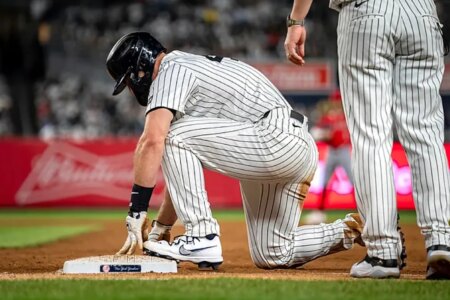The debate over implementing a salary cap in Major League Baseball is heating up once again, as MLB officials reportedly consider bringing the controversial topic back to the negotiating table ahead of the collective bargaining agreement’s expiration on December 1, 2026. While the concept of a salary cap and floor is intended to address spending disparities between large and small-market teams, it remains a major sticking point in labor relations, a point of contention that has divided owners and players for decades.
According to a report by CNBC, discussions among MLB officials have included the possibility of introducing both a salary cap and a salary floor. The salary floor would compel teams traditionally known for minimal spending, like the Oakland Athletics and Pittsburgh Pirates, to invest more competitively in player salaries.
MLB commissioner Rob Manfred has acknowledged the struggles of smaller-market teams, citing how fans in these markets often lack hope for success at the start of the season. “I think our game turns on fans having hope when you enter the season,” Manfred told the New York Times. “I think it’s a really important issue that we need to pay attention to.”
However, any push for a salary cap faces an uphill battle. The Major League Baseball Players Association (MLBPA) has long treated the salary cap as a non-starter. MLBPA executive director Tony Clark reiterated the union’s stance last year: “We’re never going to agree to a cap…A salary cap is the ultimate restriction on player value and player salary.” Players argue that spending by top-market teams reflects their true market value, and introducing a salary cap would artificially limit earnings across the league.
Not many on board with current system
MLB already has a luxury tax system that penalizes teams exceeding certain spending thresholds. However, this “soft cap” has not curbed the willingness of major-market teams to absorb penalties in their pursuit of star players. As contracts continue to skyrocket, the debate over spending inequality persists.
Supporters of a salary cap argue that it would level the playing field for smaller-market teams, potentially boosting competitiveness across the league. Yet, some emphasize that a salary floor is just as important, if not more so, in ensuring franchises invest meaningfully in talent rather than relying solely on revenue sharing.
Given the history of strained labor relations in baseball, owners pushing for a salary cap could lead to a lockout or, alternatively, concessions in other areas. For now, the MLBPA remains steadfast in its opposition, ensuring that the issue will continue to loom over negotiations as the expiration of the current CBA draws closer.
The salary cap discussion encapsulates a larger question about the future of the sport, whether MLB can strike a balance between protecting player value and fostering greater parity among teams. As these debates unfold, baseball’s stakeholders will confront tough decisions that could redefine the economic structure of the game for years to come.
Read the full article here











